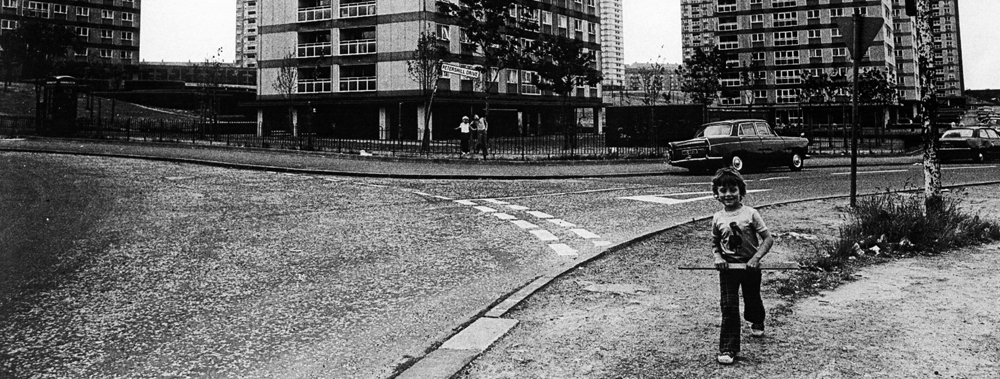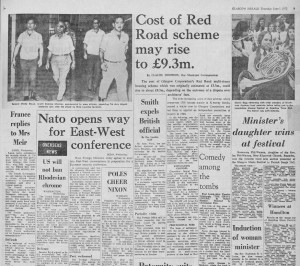The 1970s
![]()
Decline
As depression set in by the mid 1970s, the estate gained a reputation for antisocial crime, ranging from disaffected youths throwing objects from the roofs, to frequent burglaries, often carried out in support of addictions to illegal drugs. Such problems were less severe than those evident in parts of the city such as the nearby low-rise Blackhill estate, long dominated by ruthless crime gangs. But they were able to strike a nerve in the perceptions of non-residents, owing partly to the ‘looming’ ambience of the blocks which in some ways might even be called emblematic. The slab blocks, for example, are not only twenty-five storeys high but also almost 100 metres wide.
In 1977 a fire on the 23rd floor caused serious damage and the death of a twelve-year-old boy and 100 families had to be evacuated overnight. Afterwards many angry residents refused to return to their homes and demanded to be rehoused. The tenants now thought that their flats were a fire hazard and should be demolished. Glasgow councillors informed tenants who were living above the 20th floor that they would be rehoused as a priority. At the same time, plans were discussed by the housing department which recommended the block be converted into a hall of residence for students.
Spiralling Costs
In 1972 there were concerns about the original cost of the Red Road Housing Scheme, which was originally estimated at £5.3 million and was in danger of rising to £9.3 million following a dispute with the architects. The dispute involved Sam Bunton and Associates, the architects, and was about whether their fees should be calculated on the original estimate or the final approved cost. (Glasgow Herald Thursday 1st June 1972).
Click to enlarge
![]()
- Submit your story message about Red Road in the 1970s . . .>
- Read about the Red Road Flats in the 1980s . . .>




